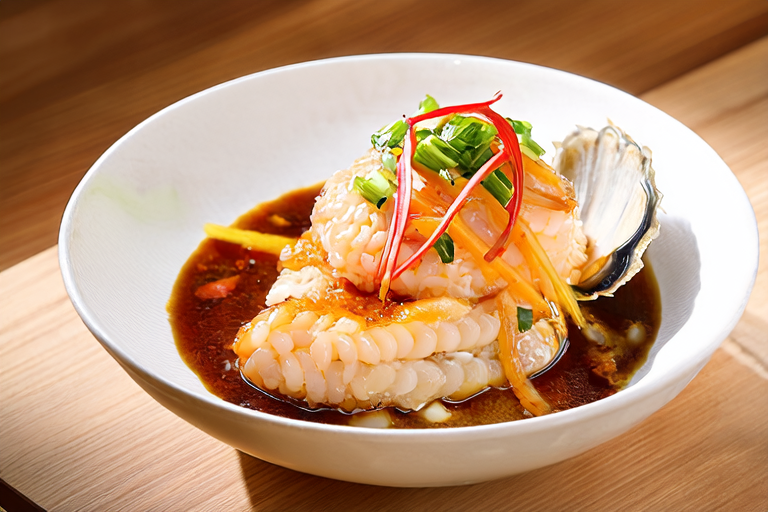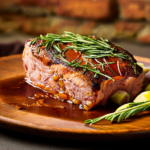Exploring the Flavors of Fujian: A Delicate Seafood Delight
Fujian cuisine, often referred to as Min cuisine, is one of the eight great traditions of Chinese cuisine. It is renowned for its exquisite seafood dishes and unique cooking techniques. The province’s proximity to the sea has influenced its culinary culture, making it a paradise for seafood lovers. This article will take you on a journey through the flavors of Fujian, exploring some of the most delicate seafood dishes that have made this cuisine famous.
The Rich History and Influence of Fujian Cuisine
Fujian Province, located in southeastern China, has a long history dating back thousands of years. Its strategic location between the mainland and Taiwan, along with its extensive coastline, has played a significant role in shaping its cuisine. The region’s rich maritime heritage has resulted in a diet that heavily features fresh seafood, complemented by an array of vegetables, mushrooms, and bamboo shoots.
The influence of Fujian cuisine extends beyond China’s borders. Many overseas Chinese communities have adopted and adapted these dishes, particularly in Southeast Asia and other parts of the world. Fujian cuisine is characterized by its emphasis on freshness, lightness, and a balance of flavors. The use of soups, broths, and sauces is common, contributing to the overall delicacy of the dishes.
Signature Dishes of Fujian Cuisine
Fuzhou Fish Balls (Fuzhou Yuwan)
Ingredients:
- 400g fresh fish meat (such as cod or snapper)
- 100g pork fat
- 1 medium-sized onion, finely chopped
- 2 cloves garlic, minced
- 1 tablespoon Shaoxing wine
- 1 teaspoon salt
- 1 teaspoon white pepper powder
- 1 egg white
- 1/4 cup cornstarch
- Soy sauce, sesame oil, and green onions for garnish
Instructions:
- Clean the fish and remove the bones. Use a food processor to grind the fish meat until smooth.
- In a bowl, mix the ground fish meat with pork fat, onion, garlic, Shaoxing wine, salt, white pepper, egg white, and cornstarch. Mix thoroughly to ensure all ingredients are evenly distributed.
- Form the mixture into small balls using your hands. Ensure each ball is smooth and even in size.
- Boil water in a pot and gently drop the fish balls into the boiling water. Cook for about 5-7 minutes or until they float to the surface and become firm.
- Drain the cooked fish balls and serve them in a bowl with soy sauce, sesame oil, and chopped green onions for garnish.
Stir-Fried Sea Cucumber with Garlic (Xiangguang Doufu)
Ingredients:
- 200g sea cucumber
- 1 block tofu, cut into cubes
- 4 cloves garlic, minced
- 1 tablespoon soy sauce
- 1 teaspoon sugar
- 1 teaspoon rice vinegar
- 1/2 teaspoon sesame oil
- 1/4 cup chicken broth
- Salt and pepper to taste
- 1 teaspoon cornstarch mixed with 2 tablespoons water for thickening
- Ginger slices and scallions for garnish
Instructions:
- Purchase pre-soaked sea cucumber from a local market. Rinse it under cold water and slice it into bite-sized pieces.
- Heat up a wok over medium heat and add a little oil. Sauté the minced garlic until fragrant.
- Add the sea cucumber slices and stir-fry for 2-3 minutes.
- Push the sea cucumber to one side of the wok and add the tofu cubes to the other side. Fry the tofu until golden brown on both sides.
- Mix in soy sauce, sugar, rice vinegar, sesame oil, and chicken broth. Stir to combine all ingredients.
- Season with salt and pepper to taste. Add the cornstarch mixture to thicken the sauce. Stir continuously until the sauce becomes glossy and coats the ingredients.
- Transfer the stir-fried sea cucumber and tofu to a serving plate. Garnish with ginger slices and scallions before serving.
Stewed Abalone with Bamboo Shoots (Bamboo Shoot Abalone)
Ingredients:
- 2 abalones
- 200g bamboo shoots, sliced
- 1 tablespoon soy sauce
- 1 teaspoon sugar
- 1 teaspoon rice vinegar
- 1/2 teaspoon sesame oil
- 1/4 cup chicken broth
- 1 teaspoon cornstarch mixed with 2 tablespoons water for thickening
- Green onions for garnish
Instructions:
- Soak the abalones in cold water for at least 2 hours to soften them. After soaking, carefully remove the outer layer and rinse them under running water.
- Place the abalones in a steamer and steam for 15-20 minutes or until they become tender. Set aside to cool.
- In a pan, sauté the bamboo shoot slices until they turn golden brown.
- In another pan, combine soy sauce, sugar, rice vinegar, sesame oil, and chicken broth. Bring the mixture to a boil.
- Reduce the heat and simmer for 5 minutes to allow the flavors to meld together.
- Thicken the sauce with the cornstarch mixture. Stir continuously until the sauce becomes glossy and coats the ingredients.
- Arrange the steamed abalones on a serving plate. Pour the sauce over the abalones and garnish with bamboo shoots and green onions.
Regional Specialties and Their Significance
Fujian cuisine not only showcases the province’s abundant marine resources but also reflects the cultural diversity and historical influences that have shaped the region. Each dish tells a story, from the humble origins of street food to the refined tastes of banquets.
The use of various herbs and spices adds complexity to the flavors, while the emphasis on freshness ensures that each bite is a testament to the quality of the ingredients. Whether enjoyed at a family dinner or a high-end restaurant, Fujian cuisine offers a unique dining experience that is both satisfying and enlightening.
Conclusion
Exploring the flavors of Fujian reveals a culinary tradition that is deeply rooted in the region’s geography and history. From the delicate fish balls of Fuzhou to the savory stir-fries and stewed dishes, each dish is a celebration of the ocean’s bounty and the skillful hands of the chefs who prepare them. As you savor these dishes, you’ll not only enjoy the exquisite flavors but also gain insight into the rich cultural heritage of this remarkable province.


